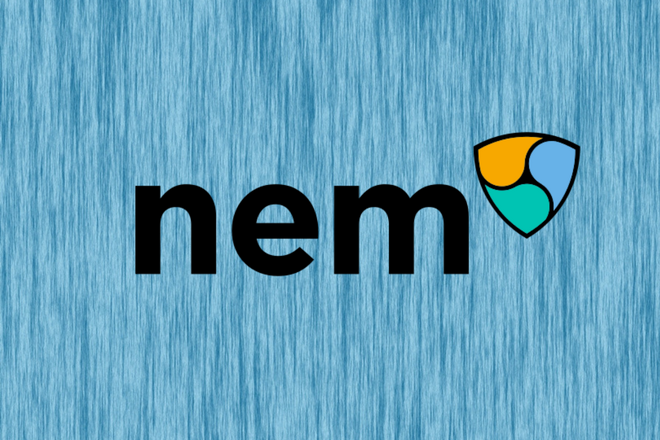NEM is the world’s first “Smart Asset” blockchain. Built with businesses in mind, NEM is a world class platform designed to offer a streamlined method to maintain a secure ledger of transactions.
NEM’s blockchain technology offers the potential to drastically simplify an enormous variety of secure ledger and transaction tracking systems. It provides an adaptable API interface that can be used with any programming language.
Designed with modular customization in mind, NEM can be used for almost any application thanks to its “Smart Asset System”.
As of October 2017, NEM is the 7th largest cryptocurrency in the world, with a market cap of nearly 2 billion.
History of NEM
NEM was launched on March 31, 2015 with the currency symbol XEM. The code was written in Java from scratch, as opposed to most other cryptocurrencies which were ‘forked’ off of existing codes and then later altered.
NEM’s origins date back to January 2014, when an open call for participation in a Bitcointalk forum called for a community-oriented cryptocurrency to be created from the ground up. The project saw 1,500 early investors buying XEM stakes, where 1 stake was equivalent to 2.25 million XEM coins.
What does NEM do?
NEM’s primary function is the implementation of what they call the “Smart Asset System”. In effect, this system gives users the ability to implement a customized blockchain for their own specific “smart contract”.
So what exactly does “Smart Asset System” mean?
Smart Assets are a way of describing the tools NEM uses to handle business data. “Smart Assets” give you the power to use NEM as if it were a custom blockchain built to handle your assets.
The “Smart Asset System” can be broken down into four components:
- Addresses: Containers that hold coins, contracts, deeds, or any business records. These are items which are unique and can be updated. These containers could be something simple like a user’s account full of coins, or something more complex like a package to be shipped, a deed to a house, or a document to be notarized.
- Mosaics: Custom tokens or other digital items. These could represent something like a coin, or items such as stock shares, reward points or even other currencies.
- Namespaces: Web addresses that prove who you are and also give your assets a home. They let you create a unique place to put your assets on the NEM blockchain, thus making your assets unique, easy to use and trustable.
- Transactions: Puts your ‘Smart Assets’ into play by allowing you to complete actions such as transferring Mosaics between Addresses or transferring and configuring ownership of Addresses.
NEM has provided a list of potential use cases for their ‘Smart Asset System’. Some uses include: voting, crowdfunding, stock ownership, keeping secure records, loyalty rewards point programs, mobile payments and escrow services. Many of these are large global industries in themselves which highlights just how huge the potential NEM customer base is.
As described in NEM’s whitepaper, NEM is designed to be a customizable blockchain-based technology used for business purposes. Because NEM’s software is so adaptable, the potential uses are nearly endless. For example, smart contracts can be used as central ledger software for banks, keeping track of transactions by investment companies, or storing and sending government documents such as birth certificates.

Unlike Bitcoin or Litecoin, NEM is not intended to be used as a currency.
In addition to the “Smart Asset System”, NEM is one of the most secure and easiest coins to use if you want to create your own coin and offer an ICO to raise funds for a startup.
According to NEM:
NEM’s approach is to let developers use a wide range of combinable functionalities which let them build powerful applications based on a closed set of atomic operations, and opens the network to almost any technological combination
Why Use NEM?
NEM Has A Low Transaction Fee of 0.01%
NEM utilizes a new code designed for transaction efficiency. XEM transactions take about 6 seconds to show up and about 20 seconds to confirm. On the other hand, Bitcoin can take up to an hour or more to confirm transactions.
Fees to transmit assets via the public blockchain (coins, documents, etc) are very low. Currently the transaction fee is only 0.01%. This means it costs $0.01 to send $100 worth of coins and $0.10 to send $1,000. In comparison, credit cards charge anywhere from 1.5 to 3% and Paypal charges 2.6%.
NEM’s 0.01% transaction fee is low even compared to other cryptocurrencies!
NEM Is Very Scalable
NEM is incredibly scalable. Currently NEM has transaction speeds comparable to Bitcoin, however when the planned updates go into effect the network could handle in the hundreds if not thousands of transactions per second. In comparison, Bitcoin is only able to handle 4-5 transactions per second. This has been a huge problem for Bitcoin and is a factor which has led to the Bitcoin currency being split into two (and soon three) different currencies.
If NEM isn’t meant to be used as a currency, then why care about trading coins? The truth is: you still need the coins.
In future, if companies use NEM software, they will eventually need to send their “Smart Assets” to various places. This will require sending the documents across the public NEM blockchain. Sending documents will require the company to pay a transaction fee, which can only be paid for in XEM (NEM’s coin).
In that respect, potential investors could see gains on their investment if companies begin to adopt NEM’s software. Since there is a set number of XEM coins (9 billion), as the demand for these coins increases, so will their value.
NEM Uses Unique Harvesting Methods
For those interested in harvesting some coins for yourself, NEM is one of most lucrative coins around (as opposed to the mining processes used by other coins).
NEM uses unique methods of Proof of Importance (POI) and Delegated Harvesting to award coins.
When a block is harvested, it confirms the transaction in the block, adds it to the blockchain permanently and then rewards the transactions fees from that block to the harvester.
A user’s POI determines who actually harvests a block, which is governed by three factors:
- The user’s vested stake or if the coins have been in their account for a number of days
- The user’s transaction partners or if the users are making transactions with others in the network
- The number and size of transactions in the last 30 days
Delegated Harvesting is an efficient way to pool account power without exposing any private keys, which yields some benefits. For instance, your computer doesn’t even have to be running to harvest and harvesting is done automatically for anyone with over 10,000 vested XEM in their accounts.
These revolutionary methods implemented by NEM have leveled the playing field and gives power to users, not to hoarders or mining farmers.
What Sets NEM Apart From Other Cryptocurrencies
NEM is 100% traceable
NEM’s traceability is one big differentiating factor. Unlike its competitors such as Monero, there are no ‘private transactions’ on NEM.
Although many in the cryptocurrency community consider this a negative, it has some advantages. For one, traceability will allow security features such as buyer and seller protection to be implemented. This is one of the reasons NEM is a very secure coin. To date, there has been no major security issues.

NEM also allows businesses to track spending habits, a feature that is useful and may attract more businesses to use it in future.
NEM Uses Less Power
NEM uses 100 times less power than Bitcoin to run a node or harvest. This is why NEM’s transaction fees cost only a fraction of some of its competitors.
NEM Is Not Subject To Inflation
Another great thing about NEM is that all of the coins (8,999,999,999 to be exact) have already been created. This means that there is zero inflation. For most other coins such as Bitcoin or Litecoin, the mining process is still actively putting new coins into circulation, which will lead to some inflation.
NEM Does Not Focus On Retail Use
One thing you do not see NEM focusing on is coin price or retail use. Many cryptocurrencies focus on the coins themselves, but NEM is much more focused on the platform and the development community to try to create new apps for the platform.
NEM’s President Lon Wong has stated:

NEM’s strategy is pursuing business relationships, on-boarding developers, helping ICOs and encouraging enterprise adoption.
Competitors and Challenges
NEM has a few big competitors such as Ripple, Factom, Ubiq. Most notable is Ethereum, the 2nd largest cryptocurrency in the world with a current market cap of nearly 30 billion dollars.
Compared to its competitors, NEM seems to be a more stable choice for building new applications with support for real business models. Its security and development features allow blockchain entrepreneurs to focus on relevant problems and not technical difficulties. Its learning curve is also much smoother than that of Ethereum.
One of the biggest challenges NEM has is getting people to understand what it does. Typically, coins such as Litecoin are designed to be used like fiat currencies. However, XEM coins aren’t meant to be used as currency, but a transactional platform for businesses and developers.
Another challenge for NEM is growing the pool of developers who have the knowledge to connect NEM to existing company networks. Luckily, NEM’s API is relatively easy to integrate with legacy networks. They have also been putting a lot of effort into growing a new wave of developers who can support their system.
NEM has opened the first blockchain center in Kuala Lumpur, Malaysia. The center is meant to serve as an incubator, accelerator and co-working space. They are clearly dedicated to promoting their product but also supporting the blockchain community as a whole.
How to Purchase and Store NEM
There are three types wallets available for you to download:
- Desktop NEM Nano Wallet: You can download the Windows, Mac and Linux versions on their website. This wallet offers all functions except the ability to set up a supernode or a full node.
- NEM Node: If you want to harvest coins, you need the NEM Node to set up a node or supernode.
- Mobile Wallet: Both Android and iOS versions are available on Google Play and the App Store, respectively.
The wallets are user friendly and easy to use. No personal information required to get a wallet; you don’t need to input names, addresses, credit card info, photo ID, or online banking information. This is a huge plus and is one of the crucial elements to mass adoption of cryptocurrencies as a whole.
Last Thoughts
Looking at the diverse business functions that NEM can perform, it is clear that there is a large potential customer base.
In addition to NEM’s current advantages, NEM plans to release the Catapult software this year which will add even more improvements to its current Mijin software. This will only put NEM further ahead of its competition. Developers at NEM are also actively working to make their product better and better.
NEM has an excellent development team, strong community support, a robust blog, good incentives and a solid business plan.

